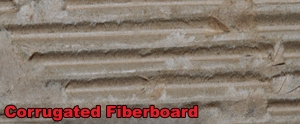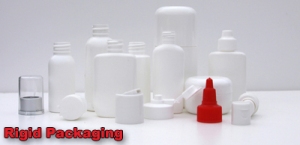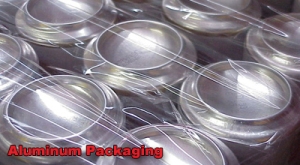Annual Packaging costs for products bought and sold throughout the world are several billions of dollars. It is estimated that 10% of the overall cost of all retail products is packaging costs. Companies spend millions of dollars using packaging as a form of marketing to attract customers while products are on the shelf.
There are a large variety of materials and containers that are used for packaging. Below is a list of the most common packaging materials used all over the world.

1. Paper/Paperboard/Fiberboard
Paperboard and fiberboard are used in both primary and secondary packaging for companies throughout the world. Paper is used for making a large variety of thinner packaging products, including labels, Kraft paper, paper bags, butcher paper, and more.
Paperboard is thicker and more durable than a standard paper material. Paperboard is often used in primary packaging. Paperboard is used for milk and juice cartons, cereal boxes, frozen food boxes, candy boxes, and more. Paperboard offers slightly more product protection than paper material and less than fiberboard.
Fiberboard of Fluted fiberboard is used in the creation of corrugated boxes. Fluting fiberboard creates ridges between two flat fiber boards creating more strength and crush resistance. According to the American Forrest and Paper Association, more than 95% of all products in the United States are shipped in secondary packaging made from fluted fiberboard.

2. HDPE/PET/Rigid Packaging
Made from polyethylene, high-density polyethylene and polyethylene terephthalate are harder and more rigid plastics than other plastics. Both materials offer excellent moisture resistance while maintaining a rigid protective structure. Some of the most common uses for HDPE and PET are bottles and Jugs.
Most water and soda bottles are made from PET. Jugs for cooking oil, milk cartons, and bottle caps are made from HPDE, which is harder and even more rigid than a PET material.

3. LDP/LLDPE/Flexible Packaging
Low-density polyethylene and Linear low-density polyethylene are flexible packaging materials used for primary and secondary products worldwide. Each material is soft to the touch and often offers excellent puncture resistance.
Low-density polyethylene is used to make a variety of bags, films, and flexible tubing for packaging. LDPE bags and tubing are often referred to a poly bags and tubing. They range in multiple thicknesses and are often used for packaging food items, dog treats, auto parts, tools, and more. Low-density polyethylene is also used to make shrink bundling film which is used as secondary packaging for cases of water bottles and canned goods.
Linear Low-Density polyethylene is often thinner than LDPE and is commonly used in the packaging industry for stretch wrap around pallets of packaged products. LLDPE is highly flexible and stretchable.

4. Aluminum Packaging
Aluminum packaging is used for a variety of applications throughout the world. The most commonly used and recognized applications for aluminum packaging are aluminum cans and containers. According to the Aluminum Association, more than 7 billion foil cans and containers are produced annually. Though the use of aluminum for cans is prominent, there are several other uses for aluminum packaging.
Foil packaging is used in medical, food, beverage, cosmetic, and many other industries as a barrier protector. The foil helps to protect products from moisture, sunlight, and other external elements. Foil packaging is often used with an adhesive to protect and preserve unopened products while on the shelf.

5. Glass/Jars
Though the PE plastic market has consumed some glass packaging, glass packaging still holds a significant market share within the packaging industry. Alcoholic and Non-Alcoholic drinks make up a large portion of the glass packaging market. Other industries that consistently use glass packaging are cosmetics and personal care, food and condiments, and even home decor and candles.
Some companies prefer glass because it is 100% recyclable and very commonly reused for new containers over and over. According to the Glass Packaging Institute, glass can be recycled endlessly without loss in quality or purity. Glass can be preferred because of the product’s perceived value. Glass can be preferred because of the perceived value of the product. More expensive products are often packaged in glass packaging to provide a higher quality look to other plastic packaged products on the shelf.
The overall packaging market is a trillion-dollar-plus industry and is composed of many different materials. Some materials such as the ones mentioned here are well-established materials that have been used for years for packaging. Other newer materials are beginning to gain market share as technology and market demands change. In our next post, we will discuss more contemporary forms of packaging gaining market share worldwide.
